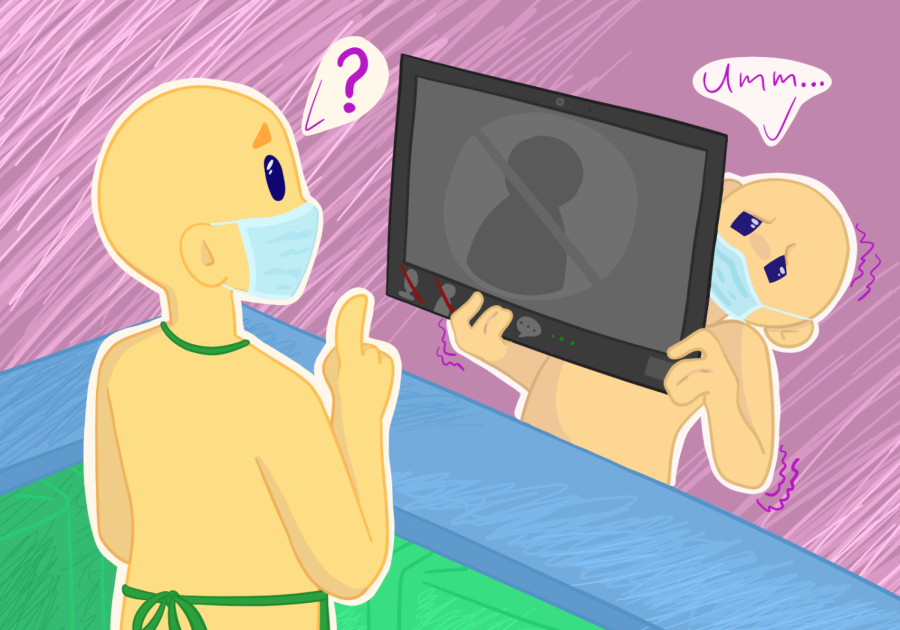Behind the mute button
One might assume that students with social anxiety might learn better through Zoom, but remote learning told a different story entirely
Many students are feeling a little extra anxious returning to school after spending th last year hiding behind a camera.
April 22, 2021
It is March of 2020. A student sits in class, writing down some notes, when it’s announced that classes will be cancelled for two weeks. The student is so relieved, but then they find out it’s not going to be as easy as they thought. All the change is making them anxious.
Flash forward a year and, after all this time they’re going back to school — another change involving lots of people. All of this builds up and the student has a panic attack worse than ever. This is the hard reality of a student with social anxiety.
Some may not know what social anxiety is or how bad it can be. Social anxiety is a mental health disorder that is triggered by many different social situations, and a big part of that includes the fear of being judged. When put in situations like answering a question at school or just being in public, social anxiety can cause many different things, such as tics or panic/anxiety attacks. In some cases, being more exposed to these situations can help, but in others, it can only make it worse.
When COVID-19 hit and students went to online school, the change had an especially large impact on the ones with social anxiety. Though some might think that remote learning might help people with social anxiety, many found it more difficult than in-person learning. A poll of 29 MCHS students with social anxiety was taken, and 93% said that the pandemic made their anxiety worse.
One student that’s anxiety was affected negatively by online school is sophomore Odessa Garcia. She explained, “I didn’t want to talk to people over Zoom in breakout rooms and teachers would continue to put us in them even if we didn’t do any work together.”
Having to talk when you need to physically unmute, and the fact that others in their group wouldn’t talk was a common stressor. Zoom also created a difficulty because of students having to unmute because they can’t control background noise, which could be parents fighting or something embarrassing a student can’t control. The fear of judgement about that was another common trigger.
This wasn’t the case for all students though. It was less common for students to feel better during the pandemic, but some did. “Having distance from school gave myself time to grow and learn”, explained a student who preferred to remain anonymous. “I started going to therapy and learned helpful exercises for when I get anxious. Now that I’ve been through that I feel I can do better in school socially and academically.”
For the students that are returning to school and feel more anxious than ever, many are learning that they are not alone. Social anxiety is more common than people realize. The shift to in-person learning might trigger more anxiety, but may also provide more opportunities to talk about it and keep working through the difficult times together.












